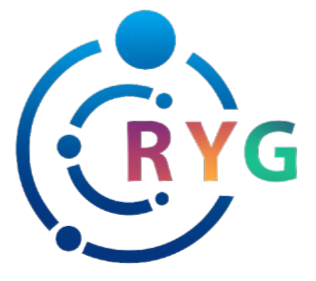- In a landscape where chance meets excitement, could the thrill of plinko be masking the truth behind is plinko a con?
- The Mechanics of Plinko: An Overview
- The Historical Context of Plinko
- The Psychology Behind Plinko
- The Ethical Considerations of Plinko
- Conclusion: The True Nature of Plinko
In a landscape where chance meets excitement, could the thrill of plinko be masking the truth behind is plinko a con?
In the vast realm of games and entertainment, few experiences evoke as much thrill and excitement as casino games. Among them, the game of Plinko has gained significant popularity in recent years, captivating audiences with its colorful aesthetics and unpredictable outcomes. Yet, this enticing game has led to some fundamental questions regarding its integrity and fairness. The central inquiry arises: is plinko a con? This article delves into the mechanics of Plinko, explores its origins, and examines the validity of the experiences it promises to offer.
Initially developed as a part of the popular television game show format, Plinko has seamlessly transitioned into the online gaming environment. With its simplistic design and engaging gameplay, players are drawn to the sensation of suspense while watching a puck fall through a maze of pegs. However, the underlying mechanics that govern the game often remain opaque to participants, which raises concerns about the potential for deception.
As we analyze this game further, it is essential to understand not just the rules and principles that dictate how Plinko is played, but also the broader implications of its operation on players’ perceptions and experiences. Furthermore, there is a considerable body of discourse surrounding the ethical considerations that should accompany games like Plinko, where chance and excitement converge in the gambling landscape.
Ultimately, by dissecting the elements and subtleties of Plinko, we aim to provide clarity on whether this dynamic game is a fair chance for players or a well-crafted facade designed to mask deeper issues. Join us as we explore the many facets of Plinko, unraveling the truth behind the thrill.
The Mechanics of Plinko: An Overview
Understanding the mechanics of Plinko is paramount to discerning its authenticity. At its core, Plinko is structured around a simple premise: a puck is released from the top of a pegged board, interacting with various obstacles as it descends towards designated slots at the bottom. Each slot correlates to a different payout, enticing players to place bets based on their predictions.
The game’s design integrates randomness, meaning that while players can anticipate possible outcomes, the actual path of the puck is unpredictable. This randomness is a double-edged sword; it’s what creates excitement, but it can also camouflage the less flattering aspects of the game. A significant question arises here: does the randomness in Plinko genuinely provide players with equal opportunities, or is it merely an illusion?
| 1 | $100 |
| 2 | $75 |
| 3 | $50 |
| 4 | $25 |
Ultimately, the mechanics of Plinko reveal a game designed to capitalize on chance while ensuring an immersive experience. However, players should remain vigilant, understanding the odds and limitations of their gameplay experience. As we proceed, we will delve deeper into the historical context and ethical dimensions surrounding the game.
The Historical Context of Plinko
Plinko has a rich history that traces back to television game shows, where it was introduced to entertain audiences during the late 20th century. The nostalgic essence of the game captivated players not just for its mechanics, but for its entertainment value, intertwining chance with the allure of winning big. Over the decades, Plinko transformed from a television spectacle into an online gambling phenomenon.
As it transitioned into digital platforms, many wondered how the fundamental principles remained intact. Surprisingly, while the visual representation may have evolved, the core structure—embodying chance and unpredictability—remained crucial in both the physical and virtual realms. However, the game’s evolution brings forth questions about its integrity in online formats.
The translation of Plinko from a physical manifestation into the digital domain has sparked a growing debate about fairness, transparency, and regulations. While the game offers an adrenaline-inducing experience, it is essential to uncover the hidden narratives surrounding its operation.
The Psychology Behind Plinko
Examining the psychology of players can provide deeper insights into how games like Plinko manipulate emotions and perceptions. The thrill of watching a puck race toward potential rewards elicits a sense of excitement and anticipation, triggering the brain’s reward center. This psychological engagement is what keeps players returning for more, further questioning if the experience outweighs rational assessments of the risks involved.
Ultimately, players may find themselves drawn to the excitement, ignoring the possibility that the odds may not be in their favor. It’s a classic example of a cognitive bias known as the “gambler’s fallacy,” where people cling to the belief that past events can influence future outcomes, even when evidence suggests otherwise.
- Excitement and Anticipation: Players often feel a rush when engaging with Plinko.
- Risk Perception: Gamblers may underestimate the risks associated with these games.
- Cognitive Bias: Emotional engagement can cloud rational judgment.
This psychological dynamic is crucial for both players and operators, as it raises ethical questions about the responsibility to provide transparent information regarding odds and payouts. Understanding these psychological dimensions can enrich the conversation surrounding the question of whether Plinko is a con or merely a game of chance.
The Ethical Considerations of Plinko
The ethics of gambling games such as Plinko must not be overlooked, particularly with the increasing digitization of gambling entertainment. Operators are tasked with the necessity to ensure fair play and to provide players with clear information about odds and payouts. Such practices forge a relationship of trust between operators and participants.
However, the ambiguity surrounding payout structures can often lead to distrust and skepticism. This is where ethical dilemmas arise, as operators must balance profit motives against the interests of players. Transparency in operations is crucial to maintaining integrity; yet, if players are kept in the dark concerning potential risks, a broader discussion on ethical misconduct in gaming emerges.
| Transparency | Essential for trust and fair play |
| Player Education | Empowers informed decision-making |
| Responsible Gaming | Encourages safe playing practices |
As we look further into the ethical implications of Plinko, we must emphasize the importance of responsible gaming practices. By prioritizing player awareness and promoting transparency, operators can create a more ethical gaming environment.
Conclusion: The True Nature of Plinko
In exploring the various dimensions of Plinko—from its mechanics and historical context to its psychological implications and ethical considerations—we come face to face with the question: is plinko a con? While it is evident that the thrill of the game is genuine, the surrounding narratives of transparency and fairness remain ambiguous. This ambiguity is pivotal in shaping player experiences and perceptions. Ultimately, informed decision-making, heightened player awareness, and ethical operator practices will define the future of Plinko as a legitimate gaming experience rather than a mere façade of chance.



Leave a Reply